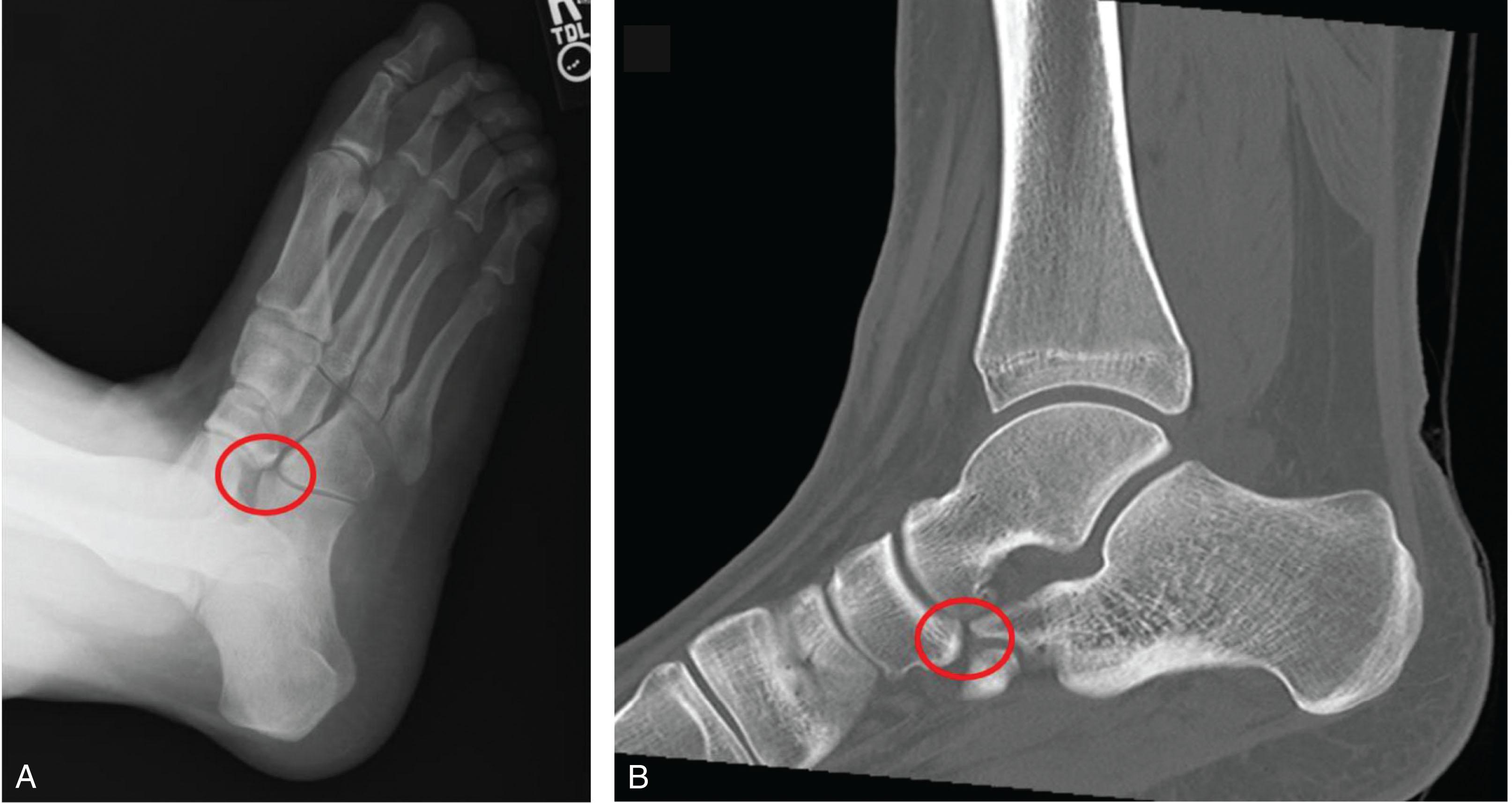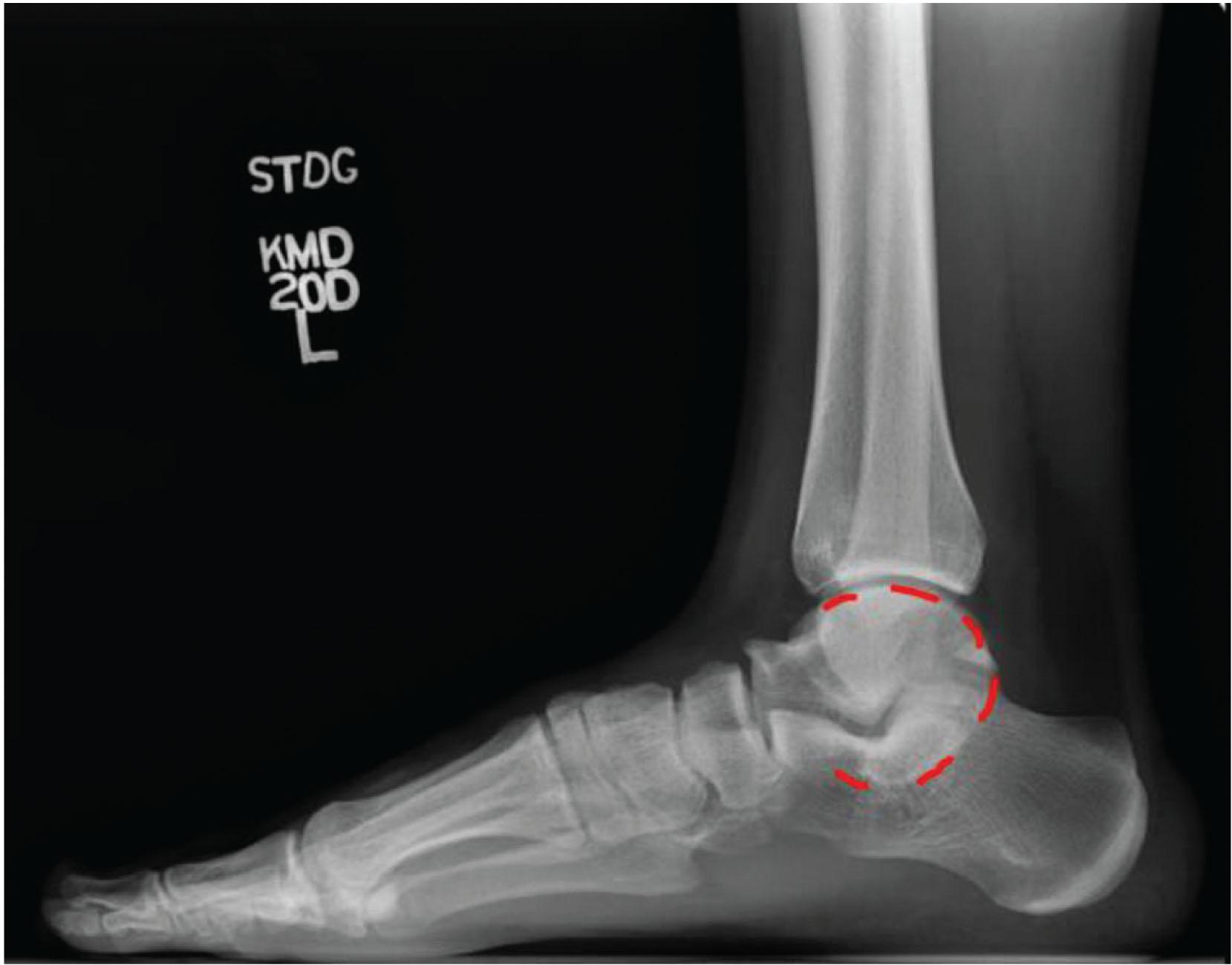Physical Address
304 North Cardinal St.
Dorchester Center, MA 02124
Tarsal coalition is a congenital anomaly consisting of aberrant osseous, fibrous, or cartilaginous bridging between the tarsal bones. The reported incidence of tarsal coalitions is 1% to 13%, with bilaterality in nearly 50%. Calcaneonavicular coalition was found to be the most common type (53%), followed by talocalcaneal coalition (37%), and together they account for 90% of all tarsal coalitions ( Figs. 36.1 and 36.2 ). Only 25% of tarsal coalitions are symptomatic, and they are typically reported between the ages of 8 and 16 years when the tarsal bones ossify. Patients with calcaneonavicular coalitions begin developing symptoms around the ages of 8 to 12 years, while talocalcaneal coalitions begin around age 12 to 16 years. Coexisting multiple tarsal coalitions in the same foot have also been reported. Though the true incidence is unclear, it is noted to occur in 3.8% to 20% of patients with tarsal coalition.


| Features | Management | |
|---|---|---|
| 1. |
|
|
| 2. |
|
±
|
| 3. |
|
|
| Preoperative Considerations | |||
|---|---|---|---|
| Factor | Significance | Resolution/Outcome | |
| 1. | Age | Younger age group (skeletally immature) | Better prognosis |
| 2. | Type of coalition | Nonossified or cartilaginous coalitions | Better prognosis |
| 3. | Preoperative imaging (computed tomography scan) |
|
|
| Intraoperative Considerations | |||
| Factor | Significance | Resolution/Outcome | |
| 1. | Presence of multiple coalitions | Requires appropriate resection | Successful outcome if appropriately addressed |
| 2. | Forefoot, midfoot, and hindfoot deformities |
|
|
| 3. | Inadequate or excessive resection | Inadequate resection leads to persistence of bridging coalition, and hence patient symptoms. Excessive resection causes iatrogenic injuries to the talar head or navicular, leading to abnormal joint mechanics and early degenerative changes |
|
| 4. | Resection of calcaneonavicular (CN) coalition without interposition | Persistence of pain, recurrence, and development of secondary osteoarthritis of the Chopart joints | Use of an appropriate interposition material following CN coalition resection |
| 5. | Resection of CN coalition with extensor digitorum brevis interposition | Results in bony prominence along the lateral border of the foot due to prominence of the calcaneocuboid joint, causing friction and difficulties with shoe wearing, as well as poor cosmesis | Use of fat or bone wax as interposition material |
| Postoperative Considerations | |||
| Factor | Significance | Resolution/Outcome | |
| 1. | Wound infection | Delayed wound healing, persistent pain, scarring | Use of nonabsorbable sutures, which help with better wound closure and handling of swelling |
| 2. | Persistent pain, stiffness, and discomfort | Inadequate resection and/or failure to address associated foot deformities |
|
| 3. | Injury to the surrounding tendons (tibialis posterior, flexor, extensor, and peroneal tensons) and neurovascular structures (posterior tibial neurovascular bundle, superficial peroneal nerve, and sural nerve) | Weakness, discomfort, and tingling or numbness of the foot | Understanding the proper anatomy of the coalition and the surrounding structures of the foot |
| 4. | Recurrence of tarsal coalition | Inadequate resection |
|
| 5. | Degenerative arthritis | Abnormal joint mechanics | Arthrodesis |
Symptoms of tarsal coalition include pain, spasm, limited subtalar motion, out-toeing deformities, and recurrent ankle injuries, resulting in a rigid, painful foot. Conservative management includes immobilization, activity modification, use of shoe inserts or orthotics to elevate the medial arch, physical therapy, and nonsteroidal anti-inflammatory medications.
Surgical management of tarsal coalition is indicated when a trial of nonoperative treatment proves ineffective. The goal of surgery includes pain relief and restoration of midfoot and hindfoot motion. The most common operative treatment of tarsal coalition includes resection of the coalition with or without interposition graft with muscle, fat, or bone wax. However, the presence of multiple coalitions in the same foot and associated hindfoot, midfoot, and forefoot deformities should be addressed. Other available surgical options include calcaneal-lengthening osteotomy and subtalar or triple arthrodesis.
Become a Clinical Tree membership for Full access and enjoy Unlimited articles
If you are a member. Log in here